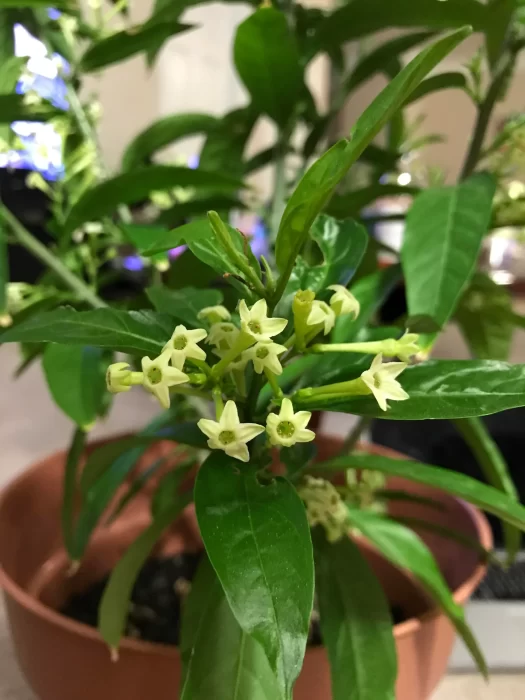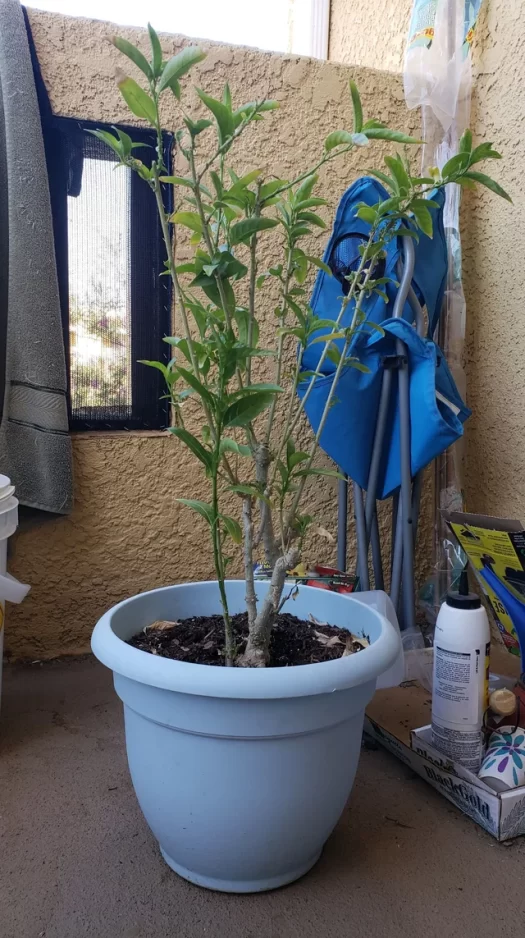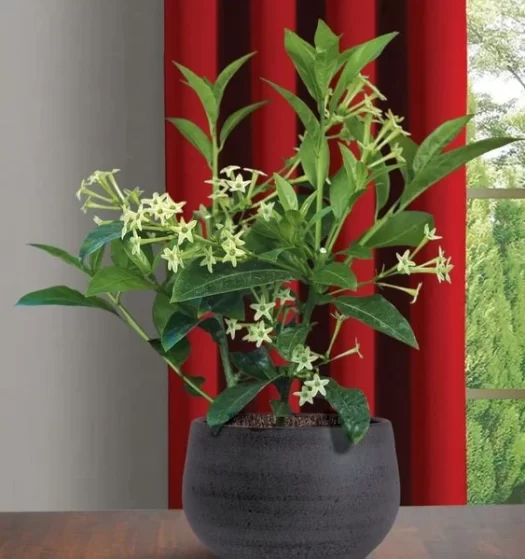If you want your home to smell sweet, you must Grow Night Blooming Jasmine Indoors! We’ll show you how! Stay tuned!

Night Blooming Jasmine is a cute shrub that is known as one of the most fragrant flowers. It spreads a sweet smell, especially during the night, keeping your home fresh and smelling like flowers. Here’s How to Grow Night Blooming Jasmine Indoors!
Night Blooming Jasmine Information
Night Blooming Jasmine is a part of the nightshade family and is native to the West Indies and South Asia, particularly India and Sri Lanka.
The flowering shrub can grow 8-10 feet tall and spread as wide as 6 feet. It also has beautiful dark green foliage and white/pale yellow flowers. These flowers open during the night and spread a sweet fruit smell everywhere. It is so named because it’s a nocturnal bloomer. And it’s adored by moths.
Botanical Name: Cestrum nocturnum
Other Names: Lady of the Night, Night Blooming Jessamine.
Propagating Night Blooming Jasmine

It’s really easy to find in any local nursery. But if you can’t, you can always get a young one online. Once you have a cutting, remove the bottom leaves and plant the cutting in a fertilizer-free potting mix.
You can also cover the pot with a plastic film to create a mini greenhouse effect. Keep the pot on a windowsill with plenty of indirect but bright light and let it grow. It’ll take about 4-5 weeks, but it will sprout roots, and then you can transplant it into a bigger pot.
You can also grow it easily through division.
Choosing a Container for Night Blooming Jasmine
You don’t need a massive pot to grow it, so go with the flow and keep changing the pot as the plant grows. Repotting is really good and also allows you to replenish the plant’s soil. When starting out, you should get a small container that’s 5-6 inches deep and wide.
Requirements for Growing Night Blooming Jasmine

Location
The Night Blooming Jasmine needs a lot of sun, so you should only grow it near a door or a south-facing window. You can also keep the plant on a west-side window, door, or balcony. West-facing parts get strong sunlight in the afternoon and early evening.
And you don’t need to worry about the harsh afternoon sun. It is a pro at handling intensity, and will be more than happy to bask in it!
Pro Tip: You should observe your plant and adjust as needed. If you notice signs like pale leaves or elongated stems, it might indicate that the plant is not getting enough light. On the other hand, brown or scorched leaves could mean it’s getting too much direct sunlight.
Soil
For the ideal night-blooming Jasmine soil mix, combine equal parts of:
- Garden soil for drainage
- Perlite for drainage and aeration.
- Organic compost for soil fertility.
- Sand to add grittiness and prevent soil compaction.
This mix has the perfect balance of nutrients, moisture, and aeration.
Water
These plants need deep watering, so soak them properly to allow the water to reach the plant’s root zone. During the active growing season (spring and summer), water the plant whenever the top inch of soil feels dry to the touch.
In winter, you should reduce the watering frequency, only providing moisture when the soil becomes notably dry.
Temperature
Jasmine night blooming prefers warm temperatures between 65-90°F (18-32°C) during the day and above 55°F (13°C) at night. Just protect the plant from frost and cold drafts, as it is sensitive to low temperatures, which can stunt its growth and flowering.
Night Blooming Jasmine Care

Fertilizer
Feeding the plant is a right way to make it flower more. The trick here is to fertilize it frequently. How you may ask?
Well, use a balanced liquid fertilizer, but instead of using it once a month at the recommended dose, dilute it to 1/4 of its strength and feed the plant every 7-10 days.
This trick will ensure the plant can absorb these nutrients at a steady rate. A consistent nutrient supply ensures that the plant has what it needs when it needs it, contributing to sustained overall health and resilience against diseases.
Pests and Diseases
Night Blooming Jasmines are susceptible to aphids, spider mites, and whiteflies. Keep an eye out for these tiny pests, especially under leaves, and treat infestations promptly with insecticidal soap or neem oil.
Also, watch for fungal diseases like powdery mildew, which can develop in humid conditions. To prevent this, avoid overcrowding plants, maintain proper air circulation and water at the base, and avoid wetting the foliage.
How to Increase the Chances of Night Blooming Jasmine Flowering Indoors?
Just make sure it gets plenty of sunlight and trim back leggy growth whenever you see it. Also, get rid of all yellow leaves and spent flowers so the plant’s energy can be used to produce new flowers.
You can also keep it slightly root-bound. When stressed due to constrained roots, the plant will redirect its energy from vegetative growth to reproductive growth—i.e., producing flowers—as a survival strategy. The trick is to let the plant become moderately root-bound but not to an extreme where it suffers from nutrient and water stress.


